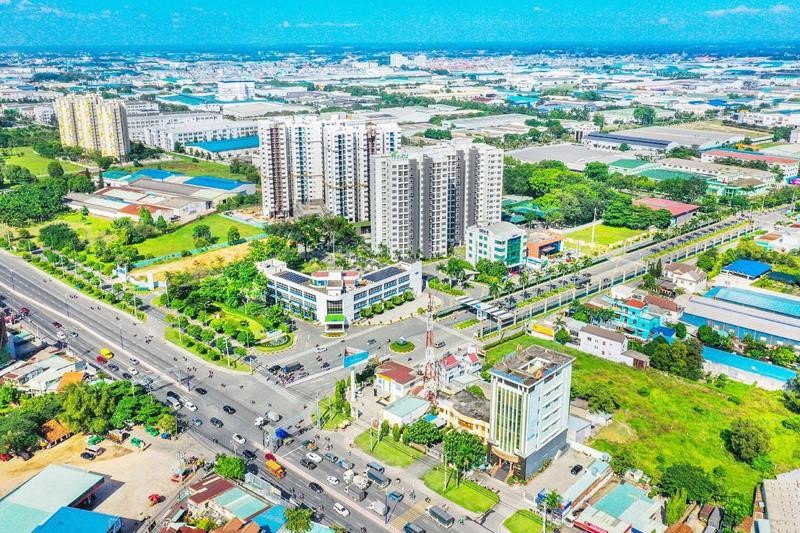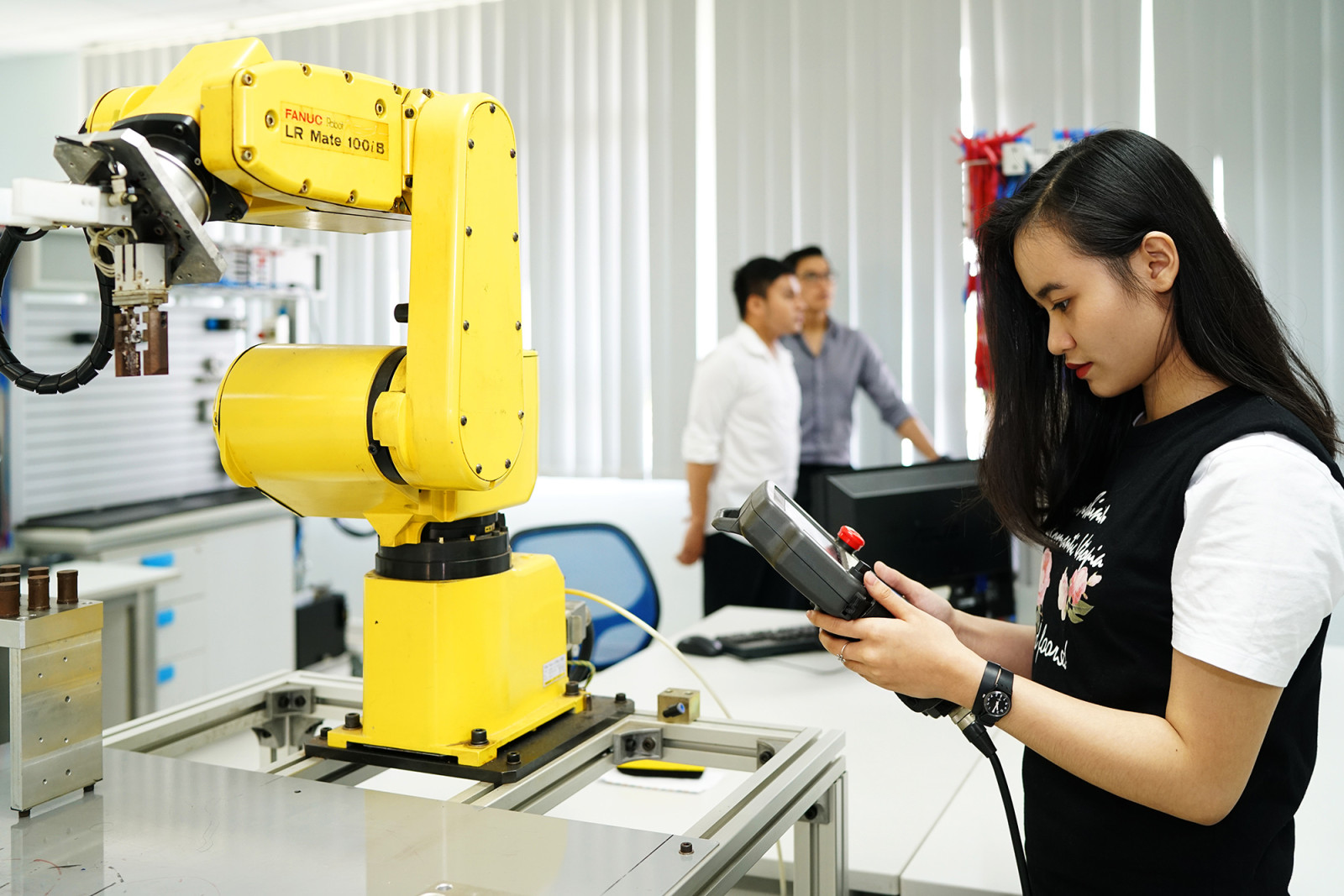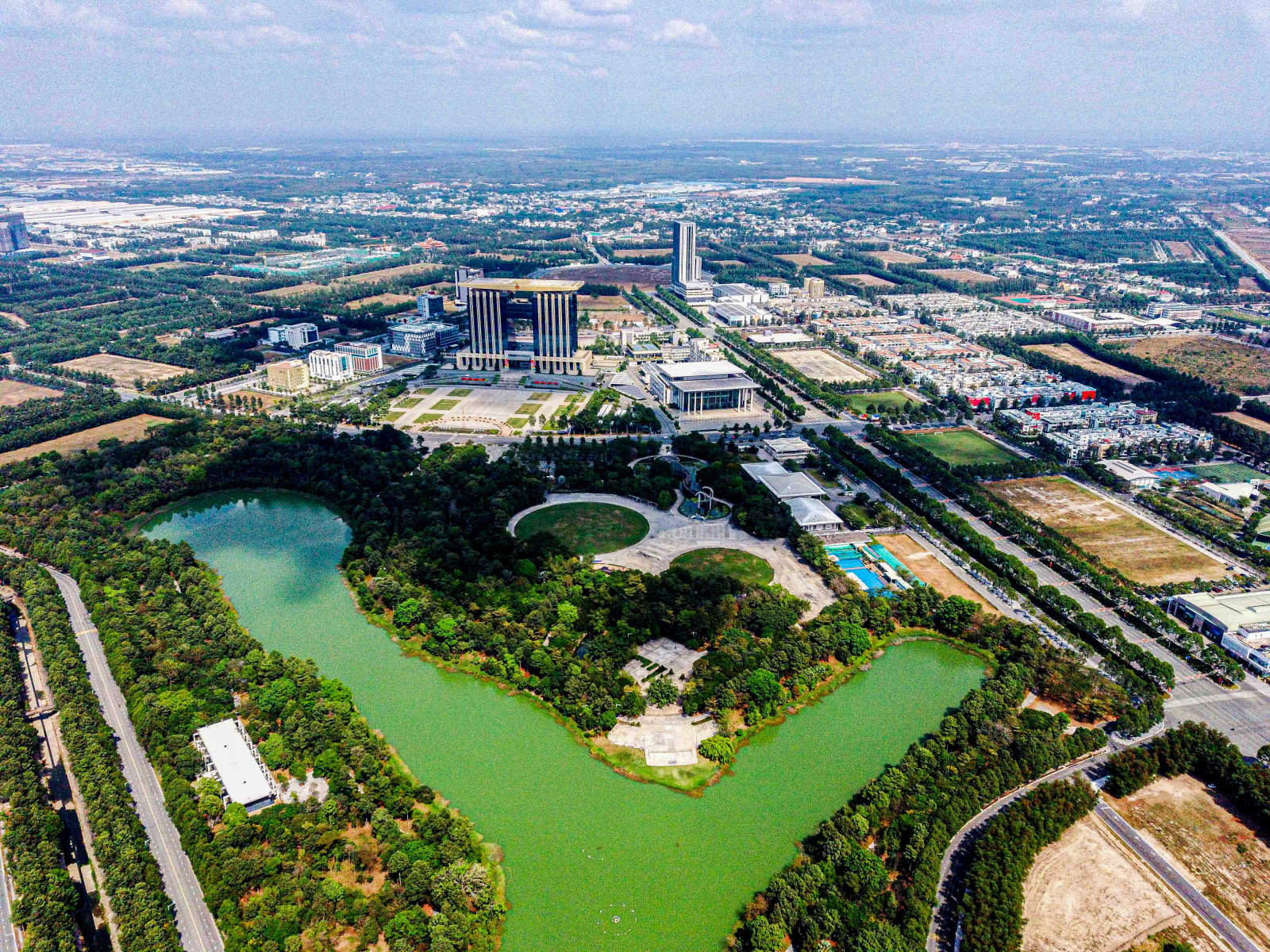Approval of provincial overall plan: Driving force for sustainable development
Deputy Prime Minister Tran Hong Ha has just signed Decision No. 790/QD-TTg approving Binh Duong provincial overall plan for the 2021-2030 period, with a vision towards 2050 (briefly called Decision No. 790/QD-TTg). Accordingly, by 2050, Binh Duong will become a modern urban, industrial, and service hub with regional and international development, serving as one of the key drivers of national economic development. The main growth driving force will be industry, services, and innovation, supported by a robust economic foundation and high competitiveness.
Becoming dynamic and comprehensive development center
According to the Decision No. 790/QD-TTg, the planning scope includes the entire administrative area of Binh Duong province, with a total natural area of 2,694.64 km², including 9 administrative units (5 cities: Thu Dau Mot, Thuan An, Di An, Tan Uyen, Ben Cat and 4 districts: Bau Bang, Dau Tieng, Phu Giao, North Tan Uyen).
Provincial planning for the period of 2021-2030, with a vision to 2050, has been approved as a foundation for Binh Duong to develop harmoniously and sustainably. In picture: Binh Duong New City is developing in a green, modern and smart direction
Specific economic targets for the period of 2021-2030 include the average annual economic growth rate of about 10%, and the GRDP per capita of approximately US$ 15,800 by 2030. The economic structure by 2030 is expected to be industry and construction at 64%, services at 28%, agriculture, forestry, and fisheries at 2%, with product taxes (excluding product subsidies) at 6%; urbanization rate at 88%-90%; and the digital economy's share reaching 30% of GRDP.
To achieve these goals, the master plan outlines 5 key tasks and breakthrough areas, including regional development cooperation; innovation in the development ecosystem; social and human resource development; green development for Binh Duong and development of dynamic spaces. The plan divides the entire province into 3 dynamic development areas:
Area 1 (including Thuan An city and Di An city): Focusing on urban redevelopment and improvement; relocating outdated and environmentally polluting industrial facilities to the northern region of the province. Utilizing available space for new urban models under the TOD (Transit-Oriented Development) principles and enhancing social infrastructure to transform Thuan An and Di An into modern cities with high quality of life.
Area 2 (including Thu Dau Mot city, Tan Uyen city, Ben Cat city and Bau Bang district): Developing based on innovation, advanced technology, regional community services and smart urban solutions as key growth drivers for the province.
Area 3 (including North Tan Uyen district, Phu Giao district and Dau Tieng district): Forming up new-generation industrial parks, attracting ecological urban-industrial-service models. Preserving and developing ecological corridors along the Sai Gon river, Dong Nai river, and Thi Tinh river…; increasing green coverage and promoting renewable energy.
Creating sustainable development momentum
Regarding orientations for industrial development, Binh Duong will attach special importance to modernizing existing industries, increasing the localization rate in auxiliary industries, developing high-tech industries, participating in global value chains with sectors such as industrial machinery and equipment; telecommunications equipment; remote control systems; integrated circuits, electronic chips and new materials; industry and chemical engineering; pharmaceuticals and cosmetics. The goal is to develop an ecological, modern, high-tech industrial sector, making manufacturing and processing industries become a key pillar of the economy. In the commerce and service sector, the plan is to develop comprehensive, modern, high-quality services to increase the service sector's proportion in the economic structure. Priority will be given to developing logistics services, high-quality trade services, industrial production support services in the region, and large-scale complex models.

According to provincial planning for 2021-2030, with a vision to 2050, the goal by 2030 is that Binh Dương will become a centrally run city
The province will also develop tourism to become a key economic sector, making Binh Duong be an innovative, eventful, smart, and modern tourism destination in the Southeastern region under the brand of "Experience and Feel". This will contribute to building Binh Duong into a creative city. Additionally, the province will strongly transform the internal structure of agriculture towards urban agriculture, high-tech agriculture, organic agriculture, ecological agriculture linked with tourism and services development…
The plan for organizing Binh Duong's socio-economic space follows the model of an innovative industrial urban area, including 1 development axis; 2 ecological corridors; 3 interconnected belts; 4 dynamic centers and 5 development zones. Specifically, the 1 development axis is the innovation axis, taking national highway 13, Bau Bang - My Phuoc - Tan Van expressway, Ho Chi Minh City – Thu Dau Mot - Chon Thanh expressway, Ho Chi Minh City - Loc Ninh railway and Suoi Tien - Bau Bang urban railway…as the linkage axis for urban-industrial-service development in each segment.
The 2 ecological corridors (including the eastern ecological corridor linked with the Dong Nai River and the western ecological corridor linked with the Sai Gon River and Dau Tieng Lake): Developing based on protecting and upholding ecological values, developing infrastructure facilities for waterway transport, fostering urban ecological service areas, resort services and ecological agricultural areas combined with supporting tourism.
The 3 interconnected belts: Expanding urban space, functions and infrastructure framework associated with 3 belts (including belt 3, belt 4, belt 5 of Ho Chi Minh city). The 4 dynamic centers are Binh Duong New City Innovation Center; Di An HUB; Bau Bang complex area; Thu Dau Mot Cultural Center. The 5 development zones are the southern urban area with Thuan An city and Di An city; industrial service urban area with Thu Dau Mot city, Ben Cet city, Tan Uyen city); Bau Bang urban area; northeastern area with North Tan Uyen district and Phu Giao district and northwestern area with Dau Tieng district.

Binh Duong is focusing on improving the quality of human resources, creating breakthrough mechanisms to attract and utilize talents
According to leaders of provincial People’s Committee, the province's planning for 2021-2030, with a vision to 2050, aims at helping Binh Duong quickly overcome the challenges of the middle-income trap, lead in innovation and cooperate with southeastern provinces and cities to become a key economic development hub of the country, reaching international levels. Accordingly, by 2030, Binh Duong will become a dynamic, comprehensive development center, a modern industrial-service center and a sustainable urban area under the green growth model, adaptable to climate change; a solid area for national defense - security and international economic cooperation and competition.
"With the spirit of inheritance and new planning, Binh Duong is sure to make faster, greener, and more sustainable progress. By 2050, Binh Duong will become a modern urban, industrial, and service region, one of the key drivers of national economic development. Its main growth drivers will be industry, services and innovation, with a solid economic foundation and high competitiveness; residents will have incomes equivalent to those in developed countries, and the economy will develop inclusively and harmoniously across regions."
The Decision No. 790/QD-TTg clearly states the general objective that by 2030, Binh Duong will become a centrally-run city; one of the dynamic and comprehensive development centers of Southeast Asia, take lead in science - technology and innovation, become a modern industrial-service center. The province’s economic - social infrastructure and urban system will be developed in a synchronous, modern, smart, and sustainable way under the green growth model, adaptable to climate change with ecological environment to be protected, improving people’s quality of life, building a prosperous, civilized and modern society, ensuring national defense – security, social order and safety.
Reported by Ngoc Thanh-Translated by Kim Tin


